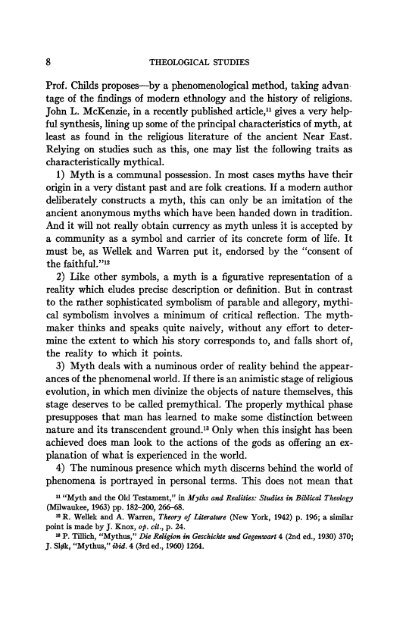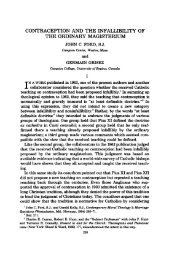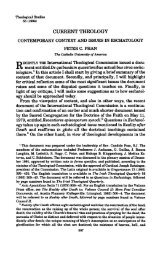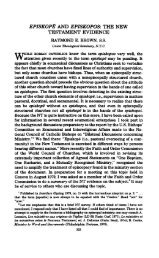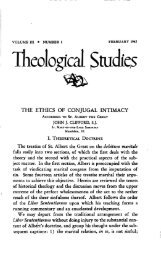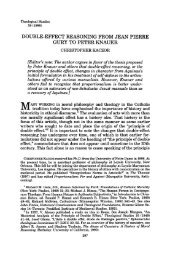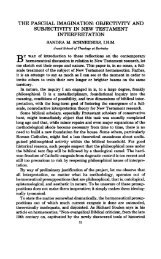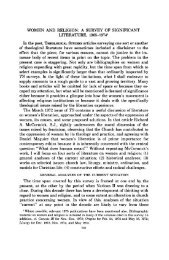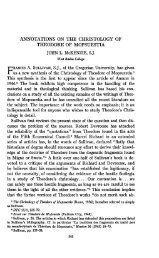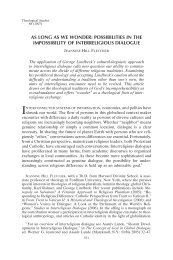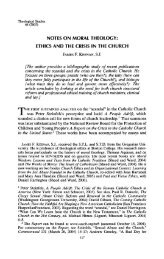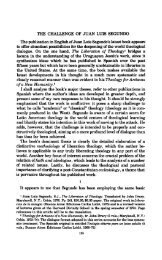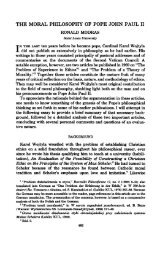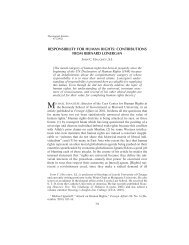SYMBOL, MYTH, AND THE BIBLICAL REVELATION AVERY ...
SYMBOL, MYTH, AND THE BIBLICAL REVELATION AVERY ...
SYMBOL, MYTH, AND THE BIBLICAL REVELATION AVERY ...
You also want an ePaper? Increase the reach of your titles
YUMPU automatically turns print PDFs into web optimized ePapers that Google loves.
8 <strong>THE</strong>OLOGICAL STUDIES<br />
Prof. Childs proposes—by a phenomenological method, taking advantage<br />
of the findings of modern ethnology and the history of religions.<br />
John L. McKenzie, in a recently published article, 11 gives a very helpful<br />
synthesis, lining up some of the principal characteristics of myth, at<br />
least as found in the religious literature of the ancient Near East.<br />
Relying on studies such as this, one may list the following traits as<br />
characteristically mythical.<br />
1) Myth is a communal possession. In most cases myths have their<br />
origin in a very distant past and are folk creations. If a modern author<br />
deliberately constructs a myth, this can only be an imitation of the<br />
ancient anonymous myths which have been handed down in tradition.<br />
And it will not really obtain currency as myth unless it is accepted by<br />
a community as a symbol and carrier of its concrete form of life. It<br />
must be, as Wellek and Warren put it, endorsed by the "consent of<br />
the faithful." 12<br />
2) Like other symbols, a myth is a figurative representation of a<br />
reality which eludes precise description or definition. But in contrast<br />
to the rather sophisticated symbolism of parable and allegory, mythical<br />
symbolism involves a minimum of critical reflection. The mythmaker<br />
thinks and speaks quite naively, without any effort to determine<br />
the extent to which his story corresponds to, and falls short of,<br />
the reality to which it points.<br />
3) Myth deals with a numinous order of reality behind the appearances<br />
of the phenomenal world. If there is an animistic stage of religious<br />
evolution, in which men divinize the objects of nature themselves, this<br />
stage deserves to be called premythical. The properly mythical phase<br />
presupposes that man has learned to make some distinction between<br />
nature and its transcendent ground. 13 Only when this insight has been<br />
achieved does man look to the actions of the gods as offering an explanation<br />
of what is experienced in the world.<br />
4) The numinous presence which myth discerns behind the world of<br />
phenomena is portrayed in personal terms. This does not mean that<br />
ii "Myth and the Old Testament," in Myths and Realities: Studies in Biblical Theology<br />
(Milwaukee, 1963) pp. 182-200, 266-68.<br />
12 R. Wellek and A. Warren, Theory of Literature (New York, 1942) p. 196; a similar<br />
point is made by J. Knox, op. cit. f p. 24.<br />
18 P. Tillich, "Mythus," Die Religion in Geschichte und Gegenwart 4 (2nd ed., 1930) 370;<br />
J. Sl0k, "Mythus," ibid. 4 (3rd ed., 1960) 1264.


